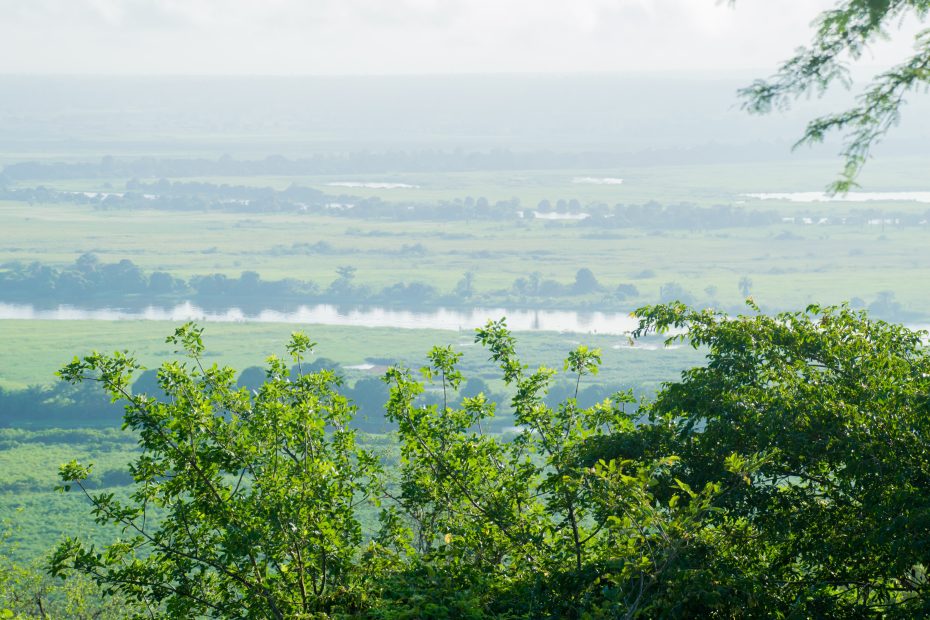Angola is a true cultural melting pot, blending influences from its indigenous peoples as well as from Portuguese colonizers. Let’s take a look at the various facets of Angolan culture and how they came to be.
Table of Contents
Historical Background
Modern-day Angola has been inhabited since prehistoric times. Various Bantu kingdoms rose to prominence over the centuries, like the Kingdom of Kongo and the Kingdom of Ndongo. Portuguese colonizers arrived in the late 15th century and would rule Angola for hundreds of years. This colonial history left an indelible imprint on the country.
Diverse Ethnic Groups
There are several main ethnic groups in Angola. The Ovimbundu people are the largest, making up about 37% of the population. Other key groups are the Mbundu, Bakongo, Lunda-Chokwe, Ngangela, and Nyaneka-Nkhumbi peoples. Each ethnic group has its own language, customs, rituals, music, and arts. This diversity strengthens Angolan culture as a whole.
Languages
Portuguese is the official language used in education, business, and government affairs. However, Angolans also speak a variety of native languages like Umbundu, Kimbundu, and Kikongo. Many Angolans grow up speaking both Portuguese and their native tongue. This linguistic diversity represents the melding of colonial and indigenous influences.
Religions
Today, Christianity is the dominant religion in Angola, brought by the Portuguese starting in the 1400s. However, native Angolan religions still exist, like the rituals of the Bakongo people that worship ancestors and forces of nature. Islam also has a small but growing presence, introduced from contacts with Muslim traders over the centuries.
Cuisine
Angolan cuisine reflects the diversity of its influences. Staple ingredients like cassava, beans, rice, and plantains are used in many dishes. The Portuguese introduced ingredients like garlic, onions, and spices that flavor Angolan cooking today. Regional variations also abound, like the seafood stews of Luanda and the spicy dishes of Malanje.
Music and Dance
From joyful Carnival parades to mournful liturgical music, Angola’s soundscape is rich and varied. Traditional genres include the energetic rhythms of semba and the trance-inducing kizomba. Internationally renowned artists like Anselmo Ralph are taking Angolan music global. Dance is integral, from the sensual kizomba to lively carnival street parties.
Visual Arts
Woodcarving and sculpture were historically important crafts, as seen in the carved masks and figures of the Chokwe people. In the 20th century, artists like António Ole adopted European styles like Cubism to create a distinctly Angolan aesthetic. Others use art to grapple with the country’s complex past, like painter Francisco Vidal.
Literature
Angola’s literary identity crystallized after independence in 1975. Authors like Luandino Vieira poignantly capture the African experience under colonialism. Jose Luandino Vieira is considered the father of modern Angolan literature. Female writers like Isabel Ferreira and Ana Paula Tavares have also made bold contributions, exploring feminism and other topics.
Architecture
Angola’s vernacular architecture includes the rectangular, thatched-roof homes of the Ovambo people and the beehive-shaped huts of the Herero. In cities, Portuguese colonial architecture is common, like in the Fortress of São Miguel in Luanda. Contemporary public buildings incorporate traditional Angolan design elements with modern materials.
Conclusion
Angola remains a vibrant cultural melting pot where foreign influences meld with native traditions. The diversity of its ethnic groups, languages, religions, cuisine, arts, and architecture reflect a rich intermingling of cultures. Angola continues to foster cultural pride while embracing its heterogeneous identity. Its cultural dynamism will likely persist as globalization accelerates.
FAQ 1: What are some key indigenous ethnic groups in Angola?
Some major indigenous ethnic groups in Angola include the Ovimbundu, Mbundu, Bakongo, Lunda-Tchokwe, Ngangela, and Nyaneka-Nkhumbi peoples. Each has its own language, belief systems, rituals, arts, and customs that contribute to Angola’s cultural tapestry.
FAQ 2: How did Portuguese colonization impact culture in Angola?
Portuguese colonization fundamentally shaped Angolan culture. The Portuguese language became dominant and Catholicism the main religion. Portuguese cuisine and architecture permeated cities. However, native cultural practices also endured and mixed with colonial influences to create Angola’s unique cultural melting pot.
FAQ 3: What kinds of music and dance are popular in Angola?
Some popular music genres from Angola are semba, kizomba, kuduro, and Afro-house. Well-known dances include kizomba, a sensual partner dance, as well as energetic carnival street dances. Contemporary Angolan music fuses native styles with Caribbean, Latin, and Western influences.
FAQ 4: How did literature develop in Angola over time?
Angola’s literary tradition was initially oral. During Portuguese rule, writers focused on colonial themes and clashed with authorities. After independence in 1975, authors like Jose Luandino Vieira created a distinctly Angolan literary voice. Today, both female and male writers explore national identity, history, and social issues.
FAQ 5: What architectural styles can be seen in Angolan cities?
Angolan cities exhibit both Portuguese colonial architecture, like classical facades and ornamented churches, as well as modernist civic buildings. Vernacular styles like the Ovambo’s rectangular homes persist in rural areas. Contemporary architects blend traditional and cosmopolitan aesthetics in new public buildings.
